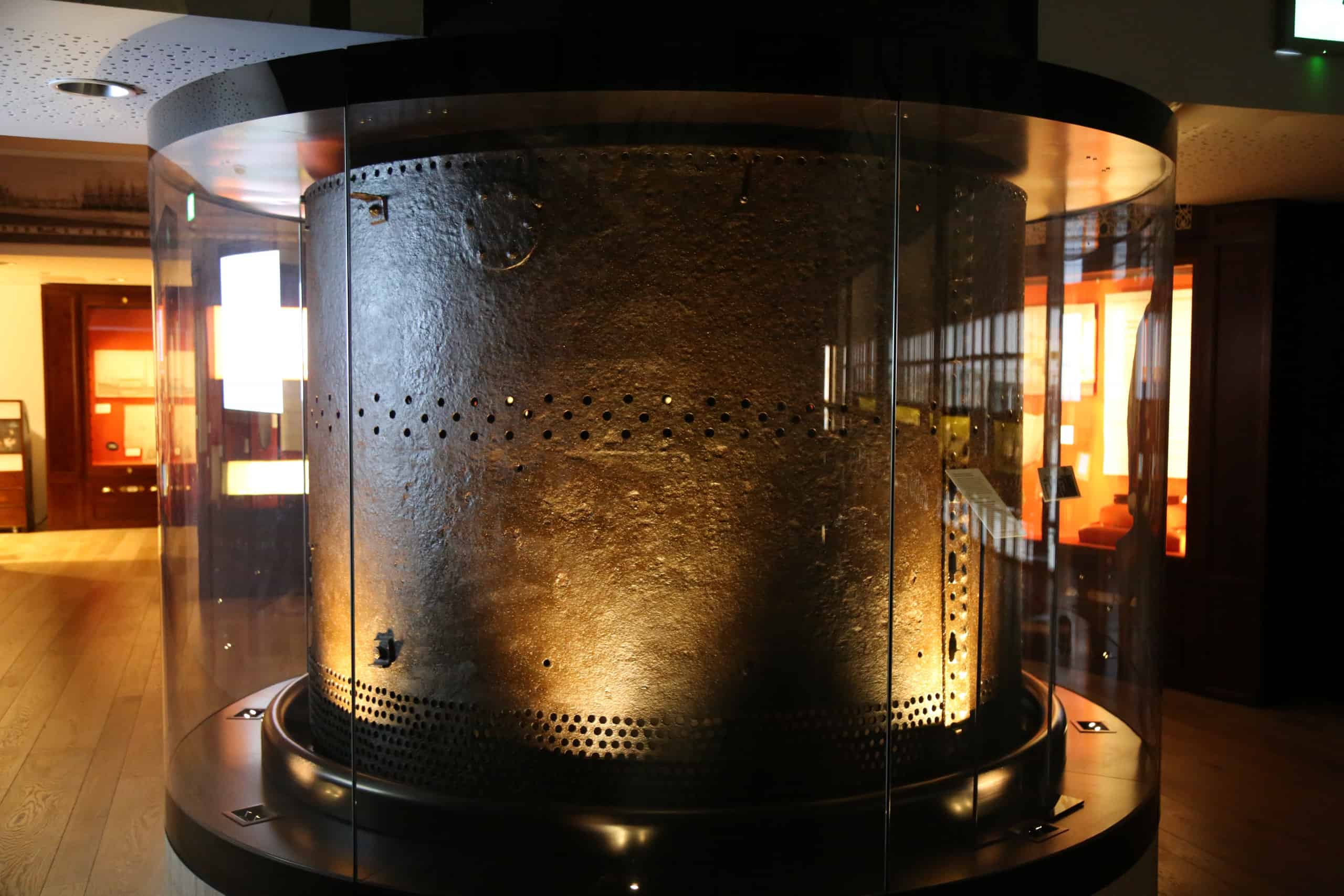- This is part of the forward funnel from Isambard Kingdom Brunel’s third, and final ship, the SS Great Eastern. The funnel was the one nearest to the bow (front) of the ship and is now one of the few remaining pieces of the Great Eastern.
- When it was built the SS Great Eastern had five funnels for its two engines. One engine was attached to two enormous paddlewheels on the sides of the ship, while the second engine turned a screw propeller. Both were needed to move the gigantic ship through the water.
- Made from iron, and held together by metal pins known as rivets, the funnel was damaged during an explosion on the ship’s first voyage on 9 September 1859.
- Following the explosion, the ship went to Weymouth, the nearest port. The damaged funnel was removed, and the Weymouth Waterworks Company bought this part of it. They then drilled lots of holes in the funnel, turning it in to a water strainer.
The Story
Maiden Voyage
The SS Great Eastern was launched into the River Thames in January 1858 and the following year was spent making the inside of the ship ready to carry passengers. In September 1859 it set out on its maiden voyage from London to Holyhead; however, as the ship steamed along the south coast of England disaster struck.
In a rush to get the ship ready, a temporary stopcock fitted to a heating tank next to the funnel was left closed. This led to a build-up of pressure which caused the casing around the front funnel to explode, damaging the deck and launching part of the funnel into the air. Debris and escaping steam filled the boiler room killing five crew members, and injuring dozens more.
Once the wounded men had been taken to the ship’s surgeons, the other engine was checked over to make sure the ship was not at risk of further explosions or sinking. It then made its way to Weymouth, the nearest harbour.
At the time there was no way for the ship to contact anyone to explain what had happened. People only knew that something had gone badly wrong on the voyage, when they gathered to see the SS Great Eastern arriving in Weymouth. To their surprise they saw the ship arrive with its flags at half-mast and one of the funnels missing.
Isambard Kingdom Brunel, who was already seriously ill, died within days of hearing about the tragedy, on 15 September 1859. An investigation was later held into the explosion, but it could not work out who was responsible for it.



